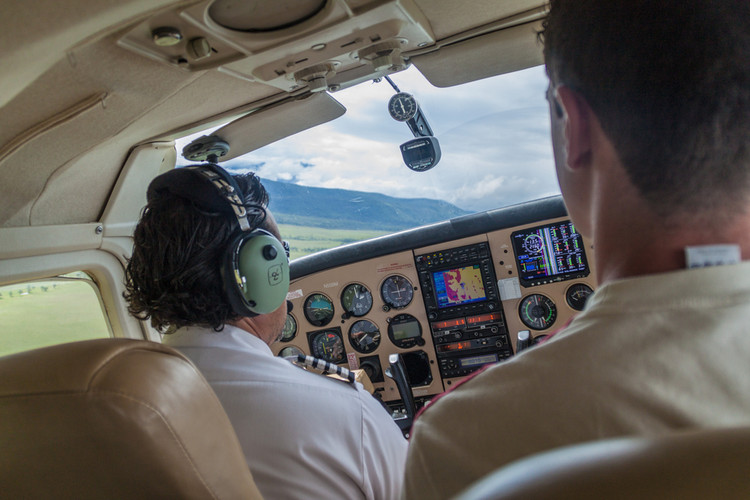Posted by Richard G on Feb 15th 2024
Once a pilot has obtained their student pilot certificate, they’re ready to take the next step towards becoming a professional pilot. For many, that means acquiring their private pilot license.
But before you start, there’s a lot you should know; eligibility requirements, how to apply, license restrictions, and much more. Luckily, the friendly pilots of Marv Golden are here to help you find your way!
What Is A Private Pilot License?
As the name implies, holding a private pilot license allows you to operate a private aircraft and carry passengers, as long as you are not compensated.
So, for example, if you want to load a few friends into your plane and fly them on a cross-country trip, go for it! But if someone wants to pay you to fly them across the country, that’s a no-go.
Eligibility Requirements For A Private Pilot License
In order to qualify for a private pilot license, you must:
- Be at least 17 years old
- Be proficient in English
- Have your student pilot certificate
- Log at least 40 total flight hours
Breaking each of these down:
The age requirement is pretty straightforward. In order to qualify for a private pilot license, you must be at least 17 years old.
Being proficient in English is a requirement for acquiring a pilot’s license just about anywhere in the world, as required by the Internation Civil Aviation Organization (ICAO). This helps avoid communication-based problems that could be catastrophic.
In order to complete your flight training, you’ll need your student pilot certificate. Check out our guide for more information.
And finally, you’ll need to log at least 40 hours of total flight time. This requirement will likely be fulfilled during your flight training, where you’ll fly under various conditions and learn several different flight maneuvers.
Applying For And Acquiring Your Private Pilot License
Your application for a private pilot license will go through the Integrated Airman Certification and Rating Application (IACRA) website.
However, before you can actually acquire your license, you’ll need to pass two different exams: A written exam and a practical exam.
The practical exam is the FAA practical exam, which is also known as a “checkride.” It consists of both an oral exam and an in-flight evaluation.
Here are some of the key resources you’ll need:
- Jeppesen GFD Private Pilot Manual - Main textbook for all fundamentals every private pilot should know
- ASA ACS: Private Pilot Airplane - Guide to everything that applicants for a private pilot license will need to know and do for their exams.
- ASA Test Prep: Private Pilot - Test prep guide for the private pilot exam. Contains study questions, answers, and explanations.
- ASA Oral Exam Guide: Private Pilot - Test prep guide for the private pilot oral exam.
Privileges & Restrictions For Private Pilots
As previously mentioned, a private pilot license allows you to carry passengers, as long as you are not compensated.
One note on that point: Private pilots ARE allowed to fly in events for charity or non-profits, but again, they may not be compensated for their time.
Furthermore, a private pilot license allows you to fly any aircraft weighing less than 12,500 pounds and grants access to Bravo airspace.
Private pilots may NOT fly in any weather condition, and restrictions may vary depending on the airspace they are operating in.
Welcome To The World Of Aviation, Pilot!
Once you’ve acquired your private pilot license, you can officially call yourself a pilot and enjoy the freedom that comes with being able to chart your own course.
You may not be able to work as a pilot yet, but holding a private pilot license is an eligibility requirement for a commercial pilot license, so you’re well on your way!
And always remember that Marv Golden is here as your source for all of the best pilot equipment, from headsets to GPS units to apparel and much much more!

